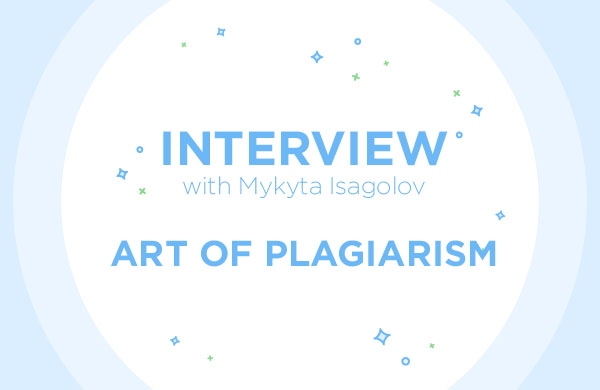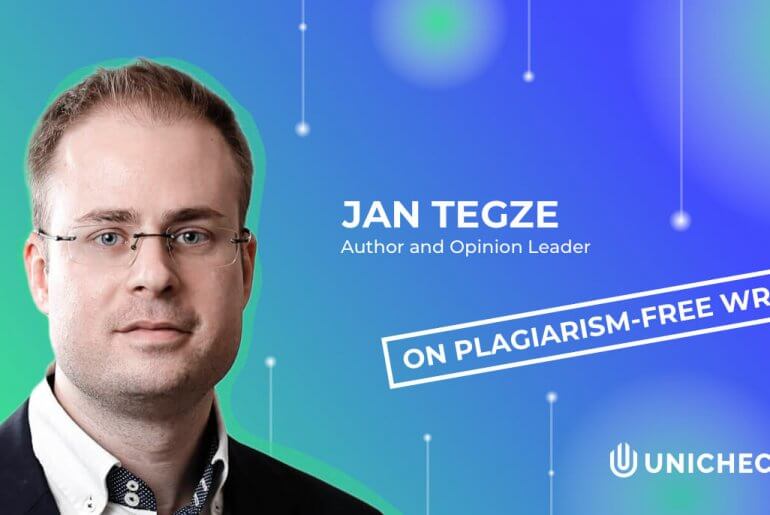Today, we publish the second part of the conversation with Mykyta Isagulov, author of Art of Plagiarism. Check out the first part of our interview here.
Do you think the development in art could have been possible without intermediality?
I tried to show it in my research, my books and articles. The whole history of the arts has plenty of cases of intermediality. They are very interesting cases and very boring cases, easy and complicated. Sometimes you can only guess about the true source that has been used by an artist (like in the Romeo and Juliet case, when there were several potential sources that Shakespeare could have used, in fact), in some cases, there is an only one-to-one correlation between the works of art. This way or another, the more you dig into intermedial processes in the arts, the more you will become aware that without copying and adapting the stories and plots from other arts (i.e. intermediality) there will be no variety of the works of art. There will be only one Ulysses (of Homer), one Siegfried (of The Song of the Nibelungs), one Thor (of Scandinavian sagas) and definitely no any other works dealing with this plot, story, character or any similar details – no James Joyce’s Ulysses and famous Bloomsday festival in Dublin, no Richard Wagner’s operas The Ring of the Nibelung, no spectacular films like Avengers: Age of Ultron.
Without a doubt, art would never be the same if no artist were allowed to copy, adapt, transform, rework and re-establish the works and ideas of fellow artists. In this case intermediality facilitates the variety of forms, techniques, and approaches in the arts.
Given that you have analyzed the plagiarism problem from antiquity to neo-modern times, do you think the percentage of plagiarism in art grows over time? If so, why?
It’s a very good question. Just think about Ancient Greece. Homer has composed his Iliad and presented the whole bunch of myths and plots, grouping them around one single event – the Trojan War. He established certain plots, characters, relations that, most likely, have never been “written down” before and existed as some separated myths. As soon as Homer’s work was declared the masterpiece of his epoch, other artists used it as their inspiration – they carved marble sculptures of the characters, painted the scenes on canvas and on the vases, other writers also got their inspiration and either wrote stories similar to Iliad (minor Iliads) or developed some episodes from Homer’s Iliad into separate literary works. Then think about what we have now. Not all the works survived, but any good book on literature, painting, music, sculpture, and architecture will probably mention a dozen of famous works based on Iliad, in its original version or on any of its various adaptations and copies.
Every generation of artists – writers and painters, sculptors, composers – brings new ideas, new copies, new intermediality and new plagiarism, when someone is not sure of the origins of his/her ideas and presents them as the result of purely his/her creative abilities. Every year brings more unconscious copying (intermediality) and more conscious copying (plagiarism) into our lives.
Generally, the word plagiarism has a negative connotation. At the end of your book, you reach a conclusion that “copying makes the world of art brighter and more intensified.” Why is plagiarism “the moving force of the art development”?
For me, plagiarism is a purely ethical problem, and I cannot limit the notion only to the cases brought to court or those that raised scandals. It is hard to describe plagiarism and prove that the work was consciously stolen. At the same time you can take the well-known names and write an absolutely different story, and then the lawyer knocks at your door and invites you to court for copyright infringement – as you have bitten off a piece of expensive cake bringing a lot of money to its owner. Sometimes such limitations can cause serious problems to a “plagiarist,” however, I think there should be no limitations in the creative process. Quite often the artists themselves cannot explain why they did that and why they chose that story and picked those names – that happened for various reason, and it requires time to find them out and understand. If we get stuck in judicial processes, we won’t be writing, painting or composing anymore – we’ll simply be afraid of the courts and lawyers. If art and creative processes are not limited to anything, copying and intermedial adaptation enrich the world of art.
Plagiarism pushes the artists to search for new ways, methods, techniques, new borders and limitations that might be broken and extended by future generations of artists.
What is your personal attitude toward plagiarism?
I don’t like people who steal the labor and ideas of others. I assume that it’s always easier to copy something that fits in perfectly well, but is it so difficult to credit the one who did all the work for you and spent many nights and days writing, checking, and rewriting? It makes me very sad to discover that some young researchers use long passages from my thesis and books and never quote or credit them. This makes me furious. You won’t be breaking a single rule or undermine the importance of your own work by crediting the original researcher, otherwise, the plagiaristic approach will just put your whole work at risk and, maybe ten or twenty years later, you’ll have a lot of problems when your plagiarism is revealed.
What is the best piece of writing advice you can give to young writers?
I guess there are many. Don’t plagiarize; don’t listen to anyone who says you should not write this or that; don’t follow the rules. Write as much as you can, read the works of as many authors as you can, travel and get inspired by as many places as possible, join other cultures in every possible way – and sooner or later you will establish your own style, develop your own form and write your first masterpiece, which sooner or later will be followed by another one – in case you continue your search for an ideal plot, ideal story, ideal characters, and ideal setting. Enjoy your lifestyle and experiment with your writing – and one day you’ll turn into a new James Joyce or J.D. Salinger.
Many thanks to Mykyta for taking the time to talk to us and discuss plagiarism in art.





